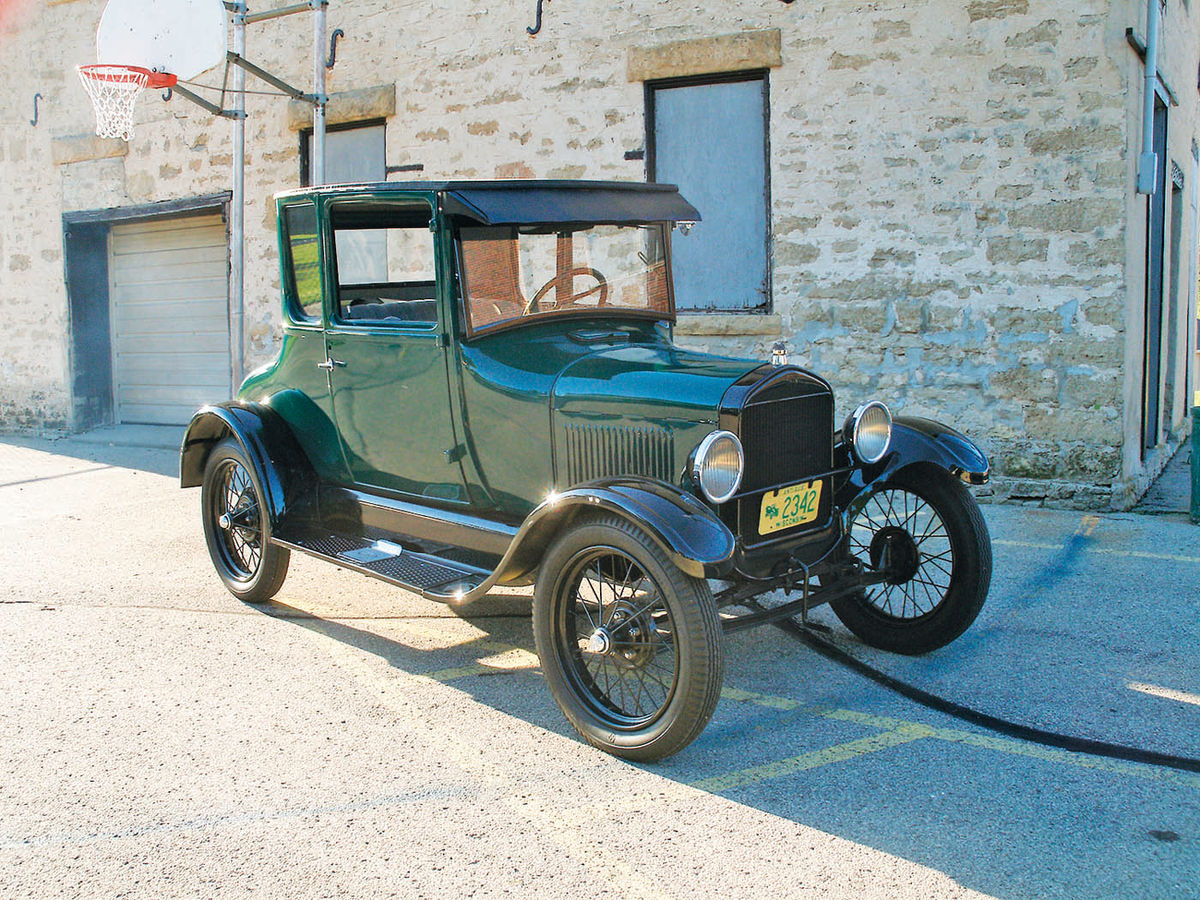Model T Memories
In Response to Our Model T Article, Readers Have Shared Some of Their T Tales. Perhaps They Weren’t the Easiest Cars to Drive, But They Did Have Personality.
Editor’s note: At Auto Restorer, readers always have had a very active role in influencing—and writing—the magazine’s content. Consider, for example, the valuable tips and insights to be found on our monthly Letters and Mechanic On Duty pages. Furthermore, a question or comment from one reader often will lead to one or several responses from others. Or take the case of our March article on learning to drive a Ford Model T. At the end of that one, we asked readers to share their own Model T stories and we received some truly interesting tales. Take a look and see what we mean:
Let’s Just Say It Wasn’t My All-Time Favorite Driver…
I wanted to take the opportunity to share my Model T memories after reading the 1924 Model T Roadster article in the March issue.
I was born in 1965 and have had the honor and pleasure of working on vehicles built in the ’20s, ’30s, ’40s, ’50s and so on and I have to say that the Model T Ford is the darndest thing I have ever driven.
My dad owned a 1927 coupe that he bought in 1957 for $25 shortly after getting married. It had no top, fenders, hood or trunk lid, but it did run and drive and had its original numbers-matching engine.
He collected parts for it over the next few years and gave it a black Rustoleum paint job that it wore for the next 40ish years until he decided to restore it around 2002 at which time he had the engine and drive train gone through, restored the chassis, re-did the interior and I provided body work and paint, dark green by the way…close to factory, but not quite.
I also learned to drive it…what an awkward experience that was. The article was correct in all facets; they are unlike anything else—three pedals and not a clutch or gas pedal among them — but there is more.
Yes, the Model T was made to run on gas, distillate (alcohol) and also kerosene via the Holley vaporizer—not a carburetor but a vaporizer — which could be dialed in as you were driving via the same choke control rod on the right side of the dash, turn it clockwise to lean it out or counterclockwise to “fatten it up.”
Don’t forget to push the emergency brake all the way forward or you won’t be able to engage the high-speed band in the transmission.
Then, when you get up to speed in high range, you can switch from battery to magneto which provided a much hotter spark and made them run much better, but don’t forget to switch back when the rpm drop during braking or “down shifting” or it will stall out.
And then, maybe you have to back up. What do you do with the transmission pedal on the left…nothing, you push the reverse pedal…
I never ever felt comfortable driving it but my dad did it like second nature. He owned several Ts and As when he was young; he bought, traded or bartered for them. He used to say if it was the first and only car you learned on it was the easiest thing to drive. I’ll have to take his word for it.
One of his favorite tricks was to see if it would start (after a warm-up) by simply pulling the spark advance down after turning the key. If it was well-tuned it would start many times in a row…I know because I did it too.
A funny side note: The only time I can remember my dad hugging me as an adult was after I was able to fish a wrench out of the transmission after it slipped off the nut while he was adjusting the low-range band.
He sold the T a few years ago. It ended up in Germany with a collector who wants one of every year.
Articles like yours keep it fresh in my mind. He died almost a year ago; I miss him and I miss the sound and smell of the T…but I can’t say I miss driving it…
— Paul Hilgers
That’s the Hilgers’ green T at the top of this page.
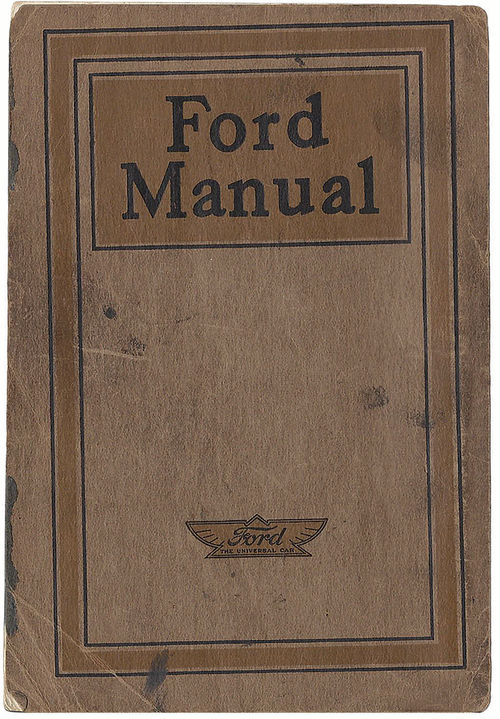
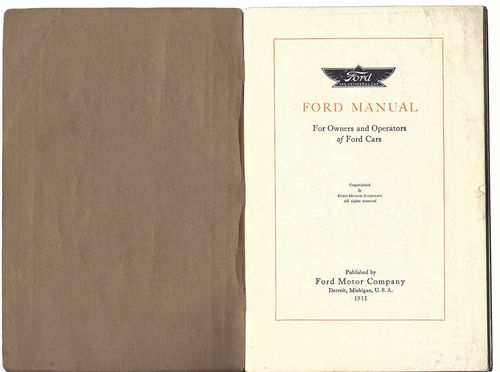
Talking With a Man Who Owned One a Century Ago
In response to your request in the March issue, I am submitting some info on my wife’s grandfather, Joe Sommers, and his 1915 T.
About 15 years ago, our family drove to Grandpa Joe’s home in Akron, Ohio. As the ladies went off to shop, my daughter Kathy and I got a chance to chat with him. Joe was born in the same house he died in...at age 100. His mind was sharp as a tack.
I asked him if he remembered his first car. This is his story:
“I was sitting on my front porch on a hot day when I saw a fellow coming down the sidewalk, dressed in a nice suit and hat. When he saw me, he stopped and asked if I owned an automobile. I told him no. He asked if he could come up on the porch and tell me about the new Ford. I motioned him up, and gave him a cool drink.
“He opened his case, and spoke to me at length about the new Ford. He had photographs and specifications. I was actually thinking about getting a car. I told him that it sounded fine, but that I never owed anybody for anything. Thus, he explained that I could make monthly payments...I think it was about $50 a month...and could pick up my car when it was paid for. I told him I didn’t want an open car, because Akron, Ohio, was darn cold in the winter. He showed me the coupe, and I agreed.
“A year later, after the last payment, I received a postcard from the dealer saying my car would be ready the next Friday. I walked into town (about two miles) and found them adjusting my car. The salesman drove me around the block, explaining things, and then rode with me around the block. I was both a car owner, and a car driver on the same day. No driver’s license was needed. I drove the car home, and the next day left to visit my parents in Toledo (138 miles). Took me six hours, as I got lost and ended up on the wrong road in Findlay.”
I asked Joe if he had a road map. “No, didn’t need one. I knew I had to go west and north. Just drove until I saw a city sign, and adjusted my direction like that.”
I asked about purchasing gasoline. “Oh, the cities all had at least one gas station. This was mostly farm country, and the farmers had tractors then, well some of them did. They’d sell you a gallon or so and tell you where the closest station was.”
Then there was the time he encountered another T on the road…under very unusual circumstances. “I was driving along, and came up on another Ford. It was going really slow, and overheating... steam just gushing out. I honked at him, and he pulled over. I had some water with me, and we got some in the radiator. I asked him how he liked his Ford. He said that he liked it, but it was slower than a horse, and drank more water.
“After some talk, I figured out that he was driving in low range. He didn’t know there was a high range. I showed him. We both laughed. I followed him for a while, then went on to my parents. I was the first one in my family to have an automobile. I had a wonderful supper, and then got up early and drove back here, to Akron.”
Grandpa Joe gave me the “Ford Manual” (seen on this page) that came with his car. It was the only part of the car that he kept.
— Richard Bailey, Newark, Ohio
The Life & Demise of the Hilarious Hearse
Here’s my Model T. story. It seems like it took place “only yesterday,” and not 67 years ago. In any case, be assured that our T did not start as easy as the one in the article.
My childhood dream was not to have my own bicycle but to own a car. Our family did not own a car except for a 1926 Chevrolet which my father had tried to repair years earlier and never got back together. We walked, rode buses and streetcars, or sometimes called on Aunt Elsie, the school teacher aunt next door.
As I dreamed, I would eye the six or seven derelict late ’20s or early ’30s cars slumbering away in front of a house on Brown Avenue when I headed on foot for my rural paper route. The rusting fleet of aging square cars had remained undisturbed year after year like a herd of silent somnolent cows. Serious auto collecting was still a wave of the future; I only wanted something that ran.
My first move beyond dreaming came shortly before graduating from Northwest Junior High School in Kansas City, Kansas, in 1947. A classified ad in the Kansas City Kansan listed a 1923 Model T panel truck. I went next door to use Aunt Elsie’s telephone as we did not have one. The elderly voice that answered my call told me where the truck was stored and when I could see it. I soon headed for the city bus stop and rode down to the lower end of Minnesota Avenue in our main business area.
In a small garage behind a closed business was a very black, very square Model T panel truck. On each side were gold letters saying “Meyer, Brush and Broom Company.” I was talking to Mr. Meyer, the elderly owner. The driver’s bench seat was open on each side. There were no doors which was typical on trucks of that era. I went from tire kicker to “I want” without hesitation. The firm price was $50, which I did not totally have. I told the owner that I would work on getting the money and call him when I had it.
That led to serious talks with my older brother about a joint investment. But before we could agree on the venture, the truck was sold to a more affluent classmate, Buddy Rogers. He painted the truck lavender and had it parked where we saw it nearly every day and continued to lust after it. He did not drive it but did not want to sell it.
Almost a year later he changed his mind and a deal was made for the same price he had paid for it. By that time I was 14 and had my driver’s license though I did not know how to drive. At the time, the key to getting a license was paying 40 cents and knowing the color of your eyes and hair. No driving test was involved. I would have failed anyway as my only driving experience was “driving” Aunt Elsie’s 1941 Chevrolet short distances on the starter in the driveway ’til the battery started to die.
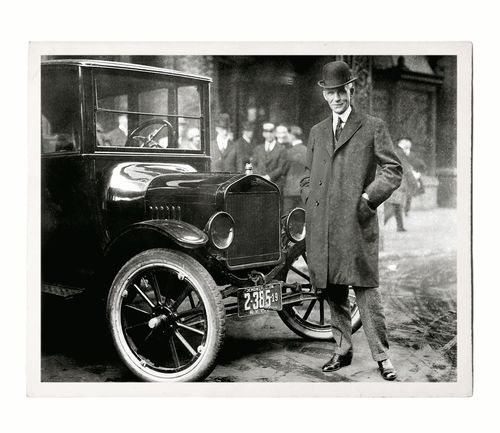
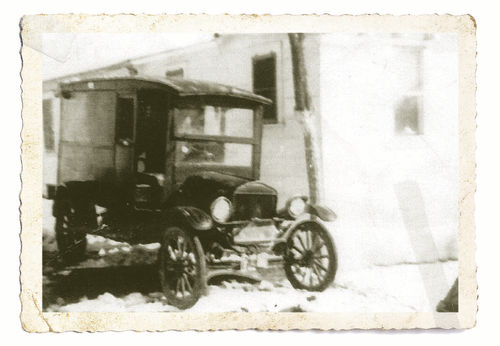
After we pooled our resources and bought the T, we repainted it black and learned to drive it by trial and errors. This learning included several trips through neighborhood yards with minimal damage. We also learned about replacing transmission bands, fixing the 30x3 and 30x3½ tires, tuning the ignition coils to sing in synch, junkyard shopping for parts, and how to safely crank and crank the engine.
Ongoing financing of the costs involved came from added paper routes and weekend jobs. Summer days were spent with cousins and friends using the truck to collect newspapers to sell for gas money or for kerosene to use after starting it on gas.
Somewhere along the way Aunt Elsie, who watched our comings and goings from her house, started calling the black truck “the Hilarious Hearse.” That seemed to fit as the square black body did resemble a hearse.
Somehow the T managed to get us, with cousins and friends, to high school for the next two years. We became skilled at backing up into our sloped driveway at night so that we would have a rolling start if cranking did not quickly start the engine in the morning. A rear wheel would be jacked up to act as an extra flywheel on cold Kansas mornings.
As antifreeze was not part of our vocabulary, the radiator water was drained each cold night and filled in the morning.
If cranking did not start the engine and cousins were there for a ride to school, we would push the T off the jack, down the driveway slope, into the street, and around the block to start it and warm it up to a point where it would keep running. At least there was one steep downhill stretch where it would usually start. If not, push it around the block and try again. We were never late to school though sometimes it required three trips around the block to start the T and keep it running.
When we got to school, we would park a block away at Aunt Lillian’s house, drain the radiator, and go to class. After school, we would get water from her house to fill the radiator before the drive home. It was then drained for the night unless we planned to drive it somewhere before it could freeze up.
One such expedition was to the American Royal Livestock Exposition in Kansas City, Missouri. This was the premier event of the year for many Midwesterners. Big league baseball had not yet arrived. For some reason we had enough passengers in the cab and in the back that I got to ride home sitting between the hood and the right front fender. The ride across the Intercity Viaduct was more than cold. And, in retrospect, not totally safe.
After my brother graduated and entered the Air Force, I finished high school using my car of the week or month as the T rested in our yard. Then I was off to college. My brother returned home and worked on the T at times. One project was to fit an overhead valve Rajo head on the engine. As the years passed, the wood and tin body gave out and the T was down to chassis, engine, and gas tank…to sit on while driving.
One summer day while I was off working, Cousin Oren took the T out for a test drive. It performed well as it always had. As I heard the story later, he had it up to even 30 or 40 miles an hour heading out State Ave. He was probably smoking a hand-rolled cigarette as he sat on the gas tank to drive.
A Plymouth pulled out from a side road right in front of him.
It’s likely that he swung the spark and throttle levers to closed and was bearing down on the brake, low and reverse pedals to slow the T as he T-boned (no pun intended) the Plymouth mid-ship.
Having no windshield to contend with, Cousin Oren went up and over the Plymouth, landing on the far side 20 or 30 feet away. He slid further picking up road grit on his backside but suffered no major injuries.
The T was pulled home and the remains sold. So ended the life of the Hilarious Hearse.
Now I browse classifieds each month hoping to find another truck like the T. The few that show up are C-cabs, not the square door opening and roof of the Hilarious Hearse.
Of course, some things never change. At current prices for collector cars, availability of dollars would still be a limiting consideration.
— Bill Chisham, Sequim, Washington

